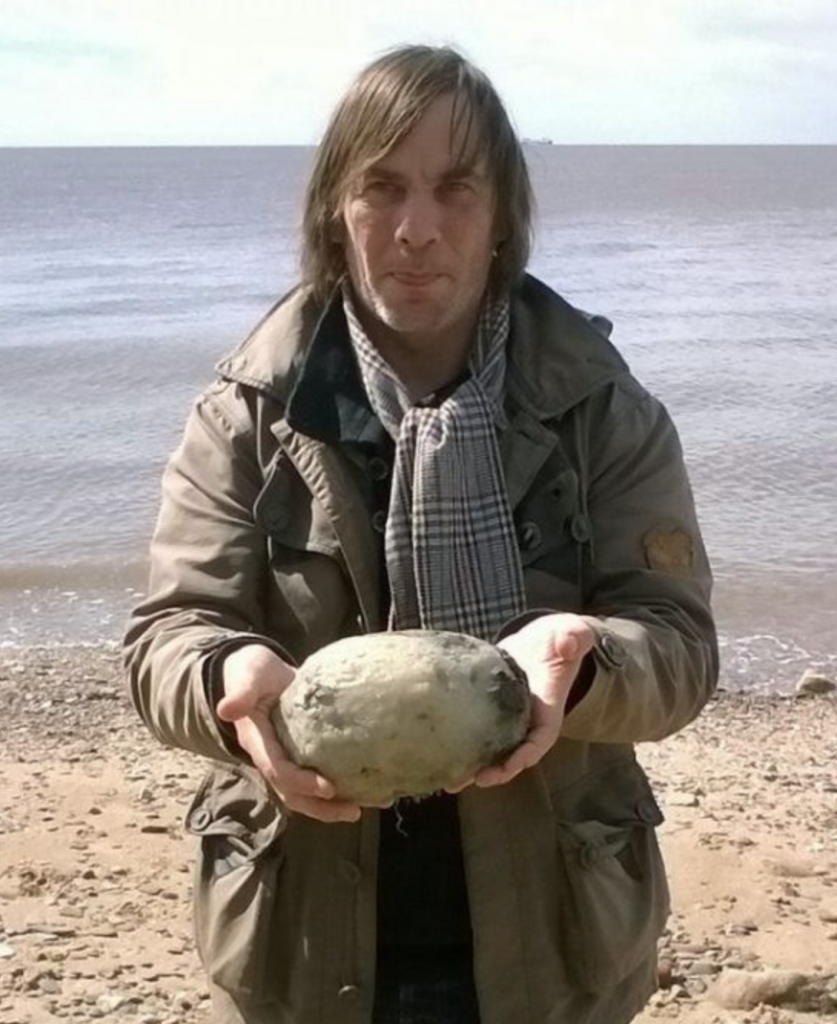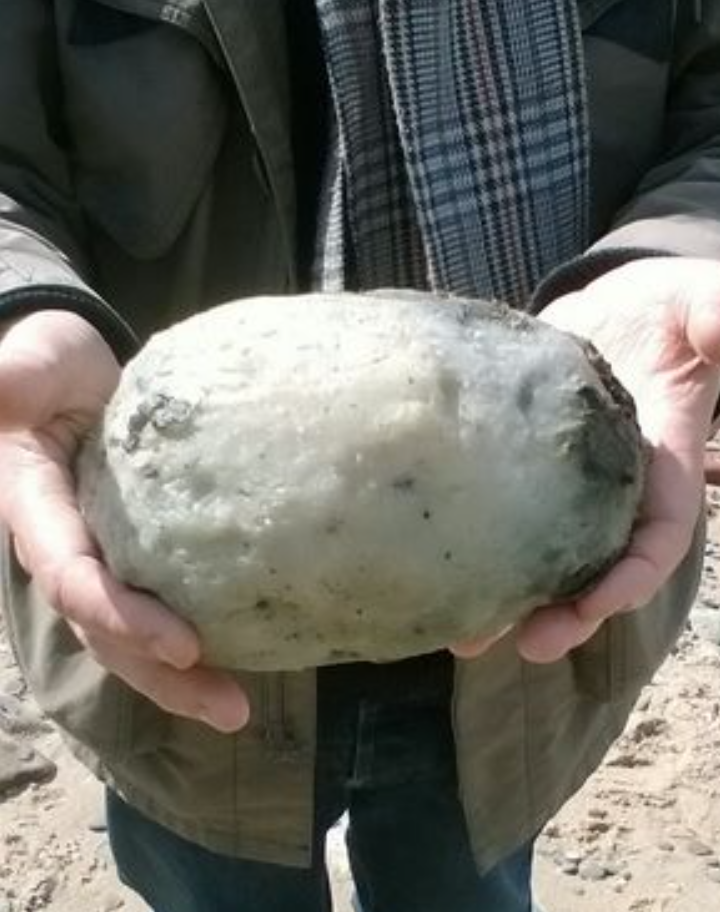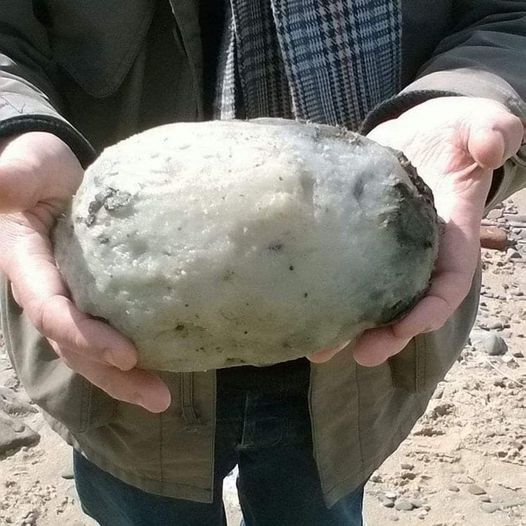Gary and Angela Williams, who live in Overton, Lancashire, were strolling along Middleton Sands beach near Morecambe Bay when they smelled rotting fish.
They followed the scent until they came across a strange-looking “rock” that appeared to be a piece of ambergris, also known as “whale vomit” and utilized in the production of perfume.

Gary, 48, later put the lump on his fishing scales and discovered it weighed 1.57kg, which is somewhat smaller than a lump discovered in the area of Morecambe several years ago.
Gary and a 49-year-old nurse named Angela are currently talking to potential buyers about the bulge that was just found. The stone is about the size of a rugby ball.
The material takes years to develop, and it is thought to protect the animal from the harsh, sharp items it eats.

After being exposed to the sun and salty water for a long time, it turns into a smooth, grey lump of compact rock.
The discovery made by Gary, an engineer, and his wife was “a bit of a shock.”
According to him, it was on a section of the beach where very few people used to stroll.
“Though it smells awfully nasty. It has a very distinct smell that is similar to a cross between manure from a farm and squid.
“It has the texture of a really hard rubber ball. It has a waxy, candle-like feel.
“Wax sticks to your fingers when you contact it.”
He added: “If it is valuable, it will go a long way toward helping us purchase a static caravan. A dream come true, that is.”
When Gary and Angela go for walks, they frequently search the beach for interesting objects.
The 1.57 kg of ambergris was discovered on Sunday, and they have since stored it safely while consulting two experts—one in France and one in New Zealand.
Experts placed the value of the 2.7 kg chunk that washed ashore in Morecambe in 2013 as high as £120,000.
At an auction in Macclesfield, Cheshire, last September, a 1.1 kg piece discovered on a beach near Anglesey, Wales, was purchased for £11,000.
